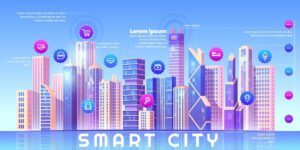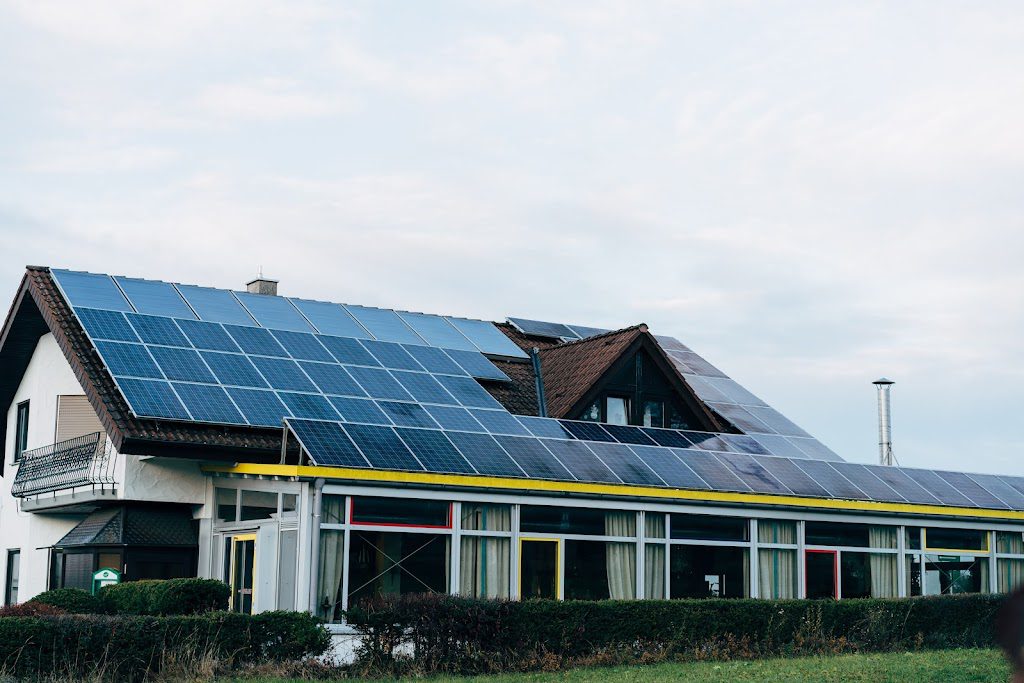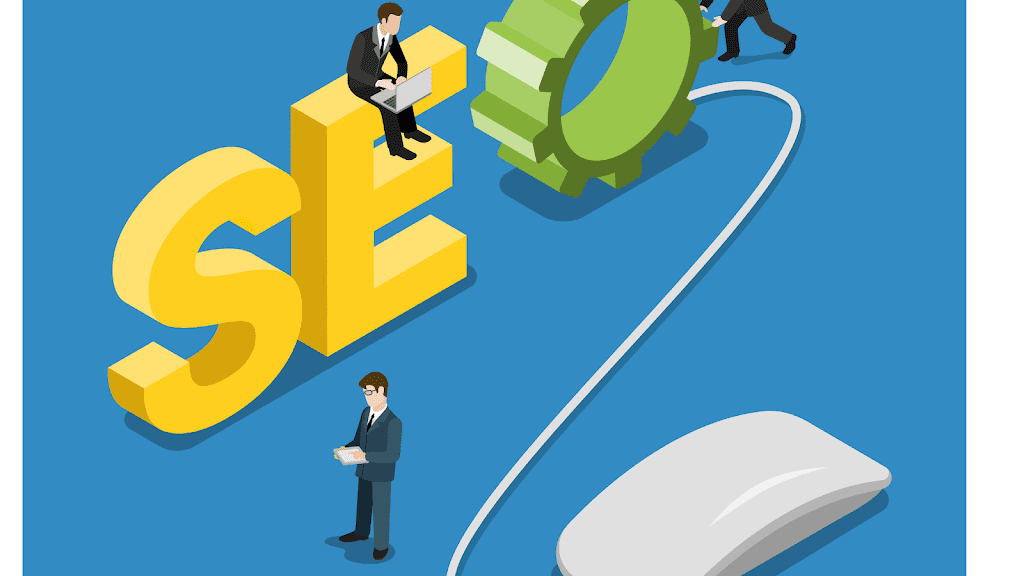The future of urban development is closely tied to the concept of smart cities which aims to use technology to improve the efficiency, sustainability, and liveability of town areas. This may include the use of IoT sensors to monitor traffic, energy, and environmental conditions. As well as the use of data analytics to optimize city services and improve decision-making. Other key components of the sharp city include the integration of renewable energy sources. The use of electric and autonomous vehicles, and the development of sharp buildings that can dynamically adjust to changing conditions. Additionally, many sharp city will also prioritize the creation of green spaces. Other features that promote walkability and bike-ability to reduce carbon footprint. Several types of technology and infrastructure are commonly associated with smarts cities and urban development:

IoT (Internet Of Things) Sensors
These devices can be used to collect data on various aspects of a city, such as traffic patterns, air quality, and energy usage. This data can then be analyzed to optimize city services and improve decision-making.
IoT sensors can be used in a variety of ways in the city, such as:
- Traffic management: IoT sensors can be used to monitor traffic flow, detect accidents, and adjust traffic lights to reduce congestion.
- Environmental monitoring: IoT sensors can be used to measure air quality, noise levels. Other environmental conditions to improve livability and identify potential health hazards.
- Energy management: IoT sensors can be used to monitor energy usage in buildings. Adjust heating and cooling systems accordingly, to save energy and costs.
- Public safety: IoT sensors can be used to monitor crime, fire. Other public safety risks to improve emergency response times.
- Parking: IoT sensors can be used to monitor the availability of parking spaces. Direct drivers to the nearest available spot.
- Waste management: IoT sensors can be used to monitor the fill level of waste bins and optimize collection routes.
- Water management: IoT sensors can be used to monitor water levels, and leaks. Water quality to improve the efficiency and sustainability of water systems.
- Agriculture: IoT sensors can be used to monitor soil moisture, temperature, light, and other environmental factors, to optimize crop yields.
Overall, IoT sensors are an important component of sharp city. They provide the data that is necessary to make informed decisions and optimize city services.
Intelligent Transportation Systems (ITS)
These systems use technology to improve traffic flow and reduce congestion. Such as through the use of real-time traffic monitoring and dynamic traffic routing.
Some of the specific applications of ITS include:
- Real-time traffic monitoring: ITS uses sensors and cameras to gather data on traffic flow and congestion. Which is then used to adjust traffic lights and other traffic management systems in real-time.
- Dynamic traffic routing: ITS uses real-time traffic data to adjust traffic signals. Route vehicles in real-time to reduce congestion and improve traffic flow.
- Advanced traveler information systems: ITS uses variable message signs, dynamic route guidance. Mobile apps to provide drivers with real-time traffic information, such as road closures, accidents, and alternative routes.
- Public transportation: ITS uses technology such as GPS tracking, and real-time schedule information. Passenger counting systems to improve the efficiency and convenience of public transportation services.
- Carpooling and ride-sharing: ITS uses technology such as mobile apps and V2V communications to connect drivers. Riders who are going in the same direction, to reduce the number of vehicles on the road.
- Connected and autonomous vehicles: ITS uses technology such as V2V and V2I communications, to improve safety, and efficiency. The comfort of autonomous cars, and to enable transportation services, such as platooning, and parking.
- Infrastructure management: ITS uses technology such as cameras, sensors, and software to manage and maintain the transportation infrastructure.
Overall, ITS is an essential component of the sharp city, as it helps to improve the efficiency, safety, and sustainability of transportation systems.
Smart Buildings
These buildings use technology to improve energy efficiency and comfort. Such as through the use of automated heating and cooling systems, and sharp lighting.
Some specific examples of how buildings use technology include:
- Automated heating and cooling systems: Buildings use sensors and building management systems to adjust the temperature based on occupancy. Weather conditions, which can reduce energy consumption.
- Lighting: Buildings use sensors and lighting control systems to adjust the brightness and color. The direction of lighting is based on occupancy and natural light levels, which can reduce energy consumption.
- Energy management: Buildings use energy management systems to monitor? and optimize the use of energy, such as electricity, heating, and cooling.
- Building security: Buildings use security systems such as cameras, and access control. The intruder detection systems improve safety and security for occupants.
- Building maintenance: Buildings use sensor and automation technologies to monitor the status of building systems and schedule maintenance as needed.
- Indoor navigation: Buildings use technology such as beacons, and sensors. Mobile applications to provide real-time location-based information? and navigation services for the occupants.
- Building automation: Buildings use technology to integrate and automate building systems. Such as HVAC, lighting, security, and access control, to improve energy efficiency and comfort.
Buildings are an important aspect of a city, as they can reduce energy consumption and costs. Improve comfort and safety for occupants, and reduce the environmental impact of building operations.
Renewable Energy
City often prioritizes the use of renewable energy sources, such as solar and wind power. To reduce its carbon footprint and dependence on fossil fuels.
Here are some types of renewable energy:
- Solar energy: This is energy that is generated from the sun, using technologies such as photovoltaic cells and solar thermal systems.
- Wind energy: This is energy that is generated by harnessing the power of wind, using technologies such as wind turbines.
- Hydroelectric energy: This is energy that is generated by harnessing the power of moving water. Using technologies such as hydroelectric dams.
- Geothermal energy: This is energy that is generated by harnessing the heat from the earth. Using technologies such as geothermal heat pumps.
- Biomass energy: This is energy that is generated by harnessing the power of organic matter, such as wood, crops, and waste.
- Tidal energy: This is energy that is generated by harnessing the power of tides. Using technologies such as tidal turbines.
- Wave energy: This is energy that is generated by harnessing the power of waves. Using technologies such as wave energy converters.
- Thermal energy: This is energy that is generated by harnessing the heat from the sun and the earth. Using technologies such as solar thermal, geothermal, and biothermal.
Each type of renewable energy has its advantages and disadvantages. The most suitable technology for a particular location will depend on factors such as climate, geography, and available resources.
Electric And Autonomous Vehicles
The city often encourages the use of electric vehicles and self-driving cars to reduce air pollution and improve traffic flow.
- Electric vehicles (EVs): These vehicles are powered by electricity rather than fossil fuels. Which makes them much cleaner and more sustainable than traditional gasoline- or diesel-powered vehicles. The city often has to charge infrastructure and incentives for EV adoption to support the transition.
- Autonomous vehicles (AVs): These vehicles are capable of driving themselves, either fully or partially. Using a variety of sensors and technologies such as cameras, radar, and lidar. AVs have the potential to reduce accidents caused by human error. Improve traffic flow by reducing congestion and optimizing vehicle movement.
- Connected vehicles (CVs): These vehicles are connected to the internet and/or other vehicles, to share information about traffic, and road conditions. Other factors that can be used to optimize traffic flow, improve safety, and reduce emissions.
The integration of these technologies can bring many benefits. Such as reducing air pollution, reducing traffic congestion, and improving safety on the road. However, it also brings challenges, such as dealing with the high costs of these technologies. The potential impacts on jobs and mobility patterns.
Green Spaces
The city often prioritizes the creation of green spaces, such as parks and bike lanes, to promote walkability and bikeability and enhance the quality of life.
Here are some specific ways that green spaces can benefit city:
- Air quality: Trees and other vegetation can improve air quality by absorbing pollutants, such as carbon dioxide and particulate matter, through the process of photosynthesis.
- Urban heat island effect: Green spaces can help to reduce the town heat island effect by providing shade, evaporating water, and absorbing heat.
- Flood control: Green spaces such as parks and gardens can help to reduce the risk of flooding by absorbing rainwater and slowing down the flow of stormwater.
- Biodiversity: Green spaces can provide habitats for a variety of plant and animal species, which can help to preserve biodiversity in town areas.
- Recreational opportunities: Green spaces can provide opportunities for residents to engage in physical activity, such as walking, biking, and playing sports, as well as opportunities for relaxation and socializing.
- Mental health: Green spaces can have a positive impact on mental health, by providing opportunities for people to connect with nature, reduce stress, and improve overall well-being.
- Economic benefits: Green spaces can also bring economic benefits, such as increased property values, tourism, and opportunities for town agriculture.
City often prioritize the creation and maintenance of green spaces, and also work on integrating them with transportation, energy, and other infrastructure, to make them more efficient and effective.
Smart Lighting
Lighting solutions use sensors, cameras, and other technologies to adjust the brightness, color, and direction of street lights based on the time of day, weather, and traffic,
Here are some specific examples of how lighting can be used:
- Energy efficiency: Lighting systems can automatically adjust the brightness and color of lights based on factors such as occupancy, natural light levels, and time of day, which can reduce energy consumption and costs.
- Control and automation: Lighting systems can be controlled and monitored remotely? using technologies such as mobile apps, web portals, and voice commands. This allows for easy and flexible control of lighting, and can also provide insights into usage patterns.
- Safety and security: Lighting systems can be used to improve safety and security in public spaces, by providing better visibility at night, and by using sensors and cameras to detect and respond to potential security threats.
- City and IoT: Lighting systems can be integrated with other city systems, such as traffic management, energy management, and waste management, to optimize their performance and reduce costs.
- Adaptive lighting: This type of lighting uses sensors and cameras to adjust the brightness and color of lights based on real-time conditions, such as the presence of pedestrians or vehicles, which can improve safety and reduce energy consumption.
- Human-centric lighting: This type of lighting aims to improve the well-being and productivity of people. By mimicking the natural light cycle? and providing lighting that is tailored to different activities and times of the day.
Lighting is a key component of city, as it can improve the energy efficiency and sustainability of lighting systems, while also improving safety and security, and enhancing the overall quality of life in town areas.
Smart Waste Management
The city uses sensors, cameras, and other technologies for efficient waste management and recycling.
Here are some specific examples of waste management:
- Bins: These are waste bins that have sensors to monitor their fill level and alert waste collection teams when they need to be emptied.
- RFID tracking: This technology uses radio-frequency identification tags to track the movement of waste through the collection and processing system, which can improve efficiency and reduce costs.
- Compactors: These are compacting waste containers that use sensors and automation technology to compress waste, which can reduce the number of collections needed and save costs.
- Recycling: This type of waste management uses technology such as sensors and cameras to sort waste into different recycling streams and improve recycling rates.
Overall, these types of waste management systems are designed to be more efficient, cost-effective, and environmentally friendly than traditional systems. The city often uses a combination of different types of these systems to achieve its goals.
Smart Governance
City uses technologies such as blockchain, AI, and big data to improve transparency, accountability, and citizen engagement in governance processes.
Here are some examples of how technology can be used to improve governance:
- E-governance: This is the use of technology such as websites, mobile apps, and online portals to provide government services and information to citizens.
- Blockchain: Blockchain technology can be used to create secure, transparent, and tamper-proof records of government transactions, such as land registries, voting systems, and public procurement.
- Open data: Open data is data that is made publicly available for anyone to use and reuse. Open data can be used to increase transparency and accountability in government, as well as to create new business opportunities and improve decision-making.
- Artificial Intelligence (AI): AI can be used to improve the efficiency and effectiveness of government services, such as by automating repetitive tasks, analyzing large data sets, and providing personalized services.
- Big data: Big data can be used to analyze large amounts of information to identify patterns, trends, and insights that can be used to improve government services, such as transportation, healthcare, and emergency management.
- Citizen engagement: Technology can be used to increase citizen engagement in government processes, such as through online forums, social media, and mobile apps, where citizens can provide feedback, report issues, and participate in decision-making.
Governance can bring many benefits such as improved transparency and accountability, better service delivery, and more efficient use of resources.
Conclusion
All these types of city technology are interconnected and often rely on each other to function effectively, and city can choose to adopt as many or as few as they want, depending on their budget, goals, and local conditions.
FAQs
What is a smart city?
A city is a city that leverages technology to improve quality of life, increase efficiency, and reduce costs for its citizens. This can include everything from traffic management systems to energy-efficient buildings and connected public services.
What are the benefits of a smart city?
The city can offer improved quality of life for citizens, increased efficiency in city operations, better use of resources, and reduced costs. They can also provide a more sustainable and livable city environment.
What are the key components of a smart city?
The key components of an intelligent city can include connected and automated systems for transportation, energy, and waste management, as well as buildings, citizen engagement and participation, and data-driven decision-making.
What technologies are used in smart city?
City leverages a variety of technologies, including the Internet of Things (IoT), big data analytics, artificial intelligence, cloud computing, and 5G networks.

